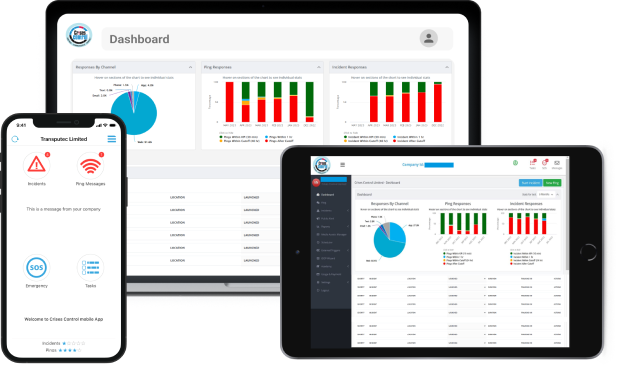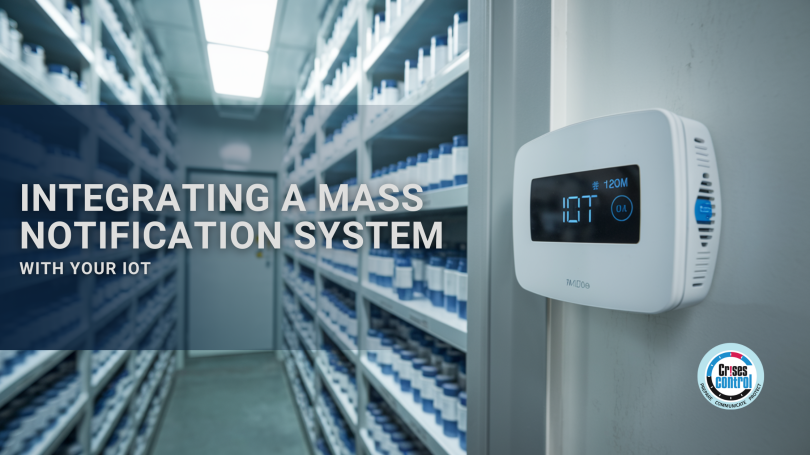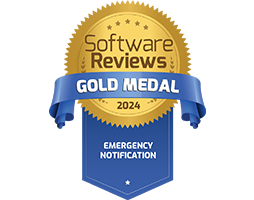Written by Anneri Fourie | Marketing Executive
The modern business landscape is marked by unexpected challenges, ranging from natural disasters to cybersecurity threats. In these high-stakes situations, effective communication can mean the difference between chaos and control. Integrating the Internet of Things (IoT) with a Mass Notification System (MNS) offers a transformative solution, enabling automated alerts, real-time monitoring, and data-driven decision-making.
However, combining these systems isn’t always straightforward. From compatibility issues to cybersecurity risks, businesses face several hurdles when embarking on IoT integration. In this blog, we’ll explore these challenges and offer actionable solutions to overcome them. We’ll also show how Crises Control simplifies this process, ensuring seamless IoT integration to help your business stay prepared and resilient.
The Role of IoT in Mass Notification Systems
The Internet of Things is reshaping crisis communication by connecting devices to gather, analyse, and share critical data in real time. When integrated with a Mass Notification System, IoT enables smarter, faster responses to emergencies.
How IoT Enhances Mass Notification Systems
- Automated Alerts: IoT sensors detect incidents—such as a sudden temperature spike in a data centre or water leakage in a warehouse—and trigger immediate notifications to relevant personnel.
- Real-Time Data Insights: Connected devices provide constant updates, empowering businesses to make informed decisions during a crisis.
- Faster Response Times: Automation eliminates delays caused by manual intervention, reducing response times when every second counts.
- Scalability for Growth: Businesses can easily add new IoT devices to an existing MNS as they expand, ensuring the system evolves with their needs.
Example in Action:
Imagine a logistics hub equipped with IoT temperature sensors. When these sensors detect unsafe heat levels in a storage area, the integrated MNS instantly notifies managers and activates cooling systems. Such automation minimises damage and downtime, keeping operations on track.
Challenges in IoT and Mass Notification System Integration
While the benefits are compelling, businesses often encounter specific obstacles when integrating IoT with a Mass Notification System.
1. Interoperability Issues
IoT devices come from a range of manufacturers, often using different protocols and standards. This lack of uniformity can lead to compatibility problems when connecting devices to a central MNS.
2. Data Overload
IoT devices generate enormous volumes of data. Without effective filtering and analytics, businesses risk being overwhelmed, potentially delaying critical decisions.
3. Cybersecurity Risks
Integrating IoT with an MNS expands the attack surface, increasing the potential for cyber breaches. Without robust security measures, sensitive data and operations may be at risk.
4. Complexity of Implementation
The technical demands of integrating IoT devices with existing systems can be daunting, requiring specialised knowledge and resources.
5. Scalability Challenges
As businesses grow, they often struggle to expand their IoT networks without experiencing performance issues or inefficiencies.
Solutions to Overcome IoT Integration Challenges
Integrating IoT with a Mass Notification System doesn’t have to be complicated. By addressing these challenges with tailored solutions, businesses can unlock the full potential of their systems.
1. Ensuring Compatibility Across Devices
To address interoperability, Crises Control employs open standards and application programming interfaces (APIs), allowing seamless communication between devices, regardless of manufacturer.
2. Managing Data Overload with Advanced Analytics
Crises Control’s platform incorporates real-time analytics that processes and prioritises data from IoT devices, ensuring decision-makers receive actionable insights promptly. This prevents information overload and helps teams focus on the most critical details during emergencies.
3. Strengthening Cybersecurity
To combat cybersecurity risks, Crises Control integrates robust measures such as data encryption, multi-factor authentication, and regular software updates. These features protect sensitive information and prevent unauthorised access.
4. Simplifying the Integration Process
Crises Control provides end-to-end support, from assessing existing IoT infrastructure to customising the Mass Notification System. This ensures a smooth, efficient implementation tailored to your business needs.
5. Leveraging Scalable Cloud Infrastructure
Crises Control’s cloud-based architecture supports effortless expansion, allowing businesses to add IoT devices as they grow without compromising performance or reliability.
How Crises Control Transforms IoT Integration
Crises Control is designed to simplify the complexities of IoT integration, empowering businesses to focus on what truly matters: managing crises effectively and safeguarding their operations.
Key Features of Crises Control’s IoT Integration
- Plug-and-Play Connectivity: Easily connect IoT devices such as environmental sensors, wearables, and surveillance systems to the platform, enabling instant access to critical data.
- Automated Alerts and Smart Responses: The Ping Mass Notification feature triggers immediate notifications based on inputs from IoT devices, ensuring swift communication during emergencies.
- SOS Panic Button for Critical Situations: Paired with IoT devices, the SOS Panic Button can automatically alert emergency teams during incidents such as workplace accidents or security breaches.
- Detailed Reporting and Audit Trails: Consolidate data from IoT devices into comprehensive reports for post-incident analysis and regulatory compliance.
- Integrated Task Management: Assign and track responsibilities in real time with the Task Manager, ensuring a coordinated response across teams.
Steps to Start Integrating IoT with Crises Control
- Evaluate Your Needs: Identify critical IoT devices and sensors essential for your business, such as temperature monitors or motion detectors.
- Partner with Crises Control: Work with our team to design a tailored solution that seamlessly integrates IoT devices with your Mass Notification System.
- Implement and Train: Benefit from hands-on support during system implementation, followed by training to empower your team with the knowledge they need.
- Monitor and Expand: Use Crises Control’s scalable cloud infrastructure to monitor performance and add devices as your business evolves.
Conclusion: Ready to Elevate Your Crisis Management Strategy?
Integrating IoT with a Mass Notification System is a game-changer for businesses aiming to enhance safety, efficiency, and resilience. Despite the challenges, a well-planned integration can transform your crisis response capabilities, enabling you to act faster, communicate smarter, and mitigate risks effectively.
At Crises Control, we specialise in bridging the gap between advanced IoT technology and reliable mass notification solutions. Our platform is built for simplicity, security, and scalability, ensuring you get the most out of your IoT integration.
Take the first step towards smarter crisis management. Contact us for a free demo and discover how Crises Control can help your business stay one step ahead.
Request a FREE Demo









